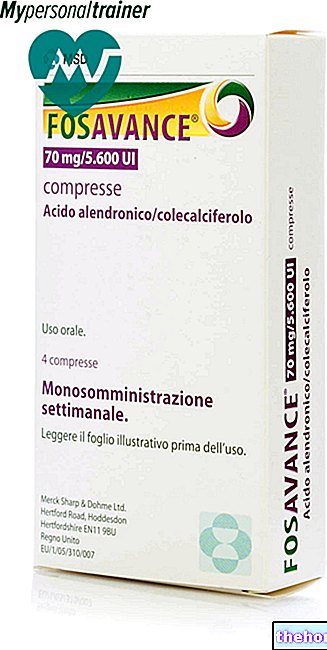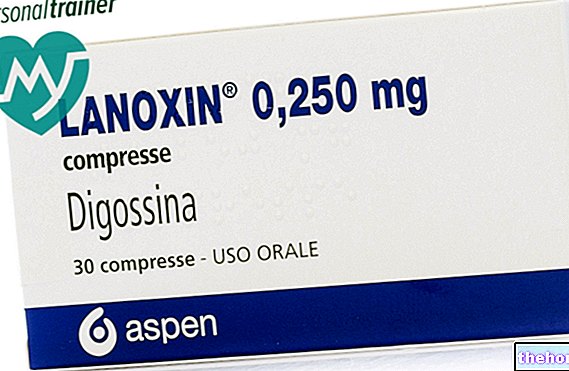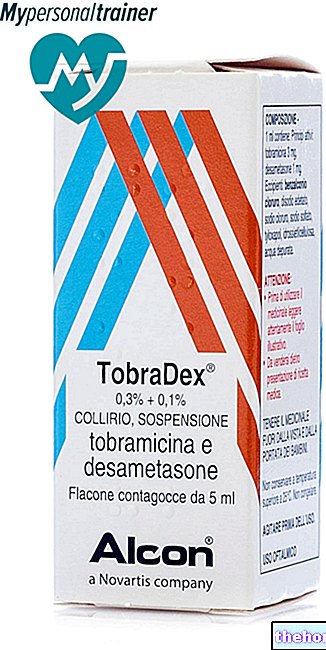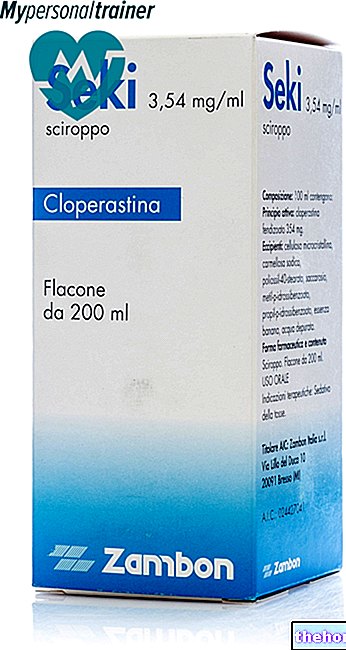Active ingredients: Diphtheria (D), tetanus (T), pertussis (acellular component) (Pa), hepatitis B (rDNA) (HBV) vaccine, anti-polyomyelitis (inactivated) (IPV) and anti-Haemophilus influenzae type b ( Hib) conjugate.
Infanrix hexa, Powder and suspension for suspension for injection in a pre-filled syringe
Why is Infanrix Hexa used? What is it for?
Infanrix hexa is a vaccine used to protect the child from six diseases:
- Diphtheria: a serious bacterial infection that causes problems especially in the upper respiratory tract and sometimes the skin. The airways swell causing severe breathing problems and sometimes leading to suffocation. The bacteria also release a poison. This can cause nerve damage, heart problems and even death.
- Tetanus: Tetanus bacteria enter the body from cuts, scrapes or wounds to the skin. The wounds most likely to cause tetanus infection are burns, fractures, deep wounds or wounds that contain dirt, dust, manure. or splinters of wood. Bacteria release a poison. This can cause muscle stiffness, painful muscle spasms, convulsions and even death. Muscle spasms can be so violent that they cause bone fractures in the spine.
- Whooping cough (whooping cough): it is a very contagious disease that affects the respiratory tract. It causes a strong cough which can lead to breathing problems. The cough often has a "wheezing" sound and can last for a month or two or more. Whooping cough can also cause ear infections, chest infections (bronchitis) that can last for a long time, lung infections (pneumonia), seizures, brain damage and even death.
- Hepatitis B: is caused by the hepatitis B virus which causes the liver to enlarge. The virus is found in body fluids such as in the vaginal mucosa, blood, semen or saliva (spit) of infected people.
- Poliomyelitis: It is a viral infection. Polio is often only a mild disease. However, it can sometimes be very serious and cause irreversible damage or even death. Polio can cause immobility of the muscles (paralysis) including the muscles that allow breathing and movement. The arms or legs affected by this disease can be painfully twisted (deformed).
- Haemophilus influenzae type b (Hib): can cause brain inflammation. This can lead to serious problems such as mental retardation, cerebral palsy, deafness, epilepsy and partial blindness. It can also cause swelling of the throat. This can cause death by suffocation. Less commonly, bacteria can also infect the blood, heart, lungs, bones, joints, eyes and mouth.
How Infanrix hexa works
- Infanrix hexa helps the baby's body to produce its own protection (antibodies). This will protect the baby from these diseases.
- As with all vaccines, Infanrix hexa may not fully protect all vaccinated children.
- The vaccine cannot cause the diseases from which the child is protected
Contraindications When Infanrix Hexa should not be used
Infanrix hexa must not be administered:
- if your child is allergic to: - Infanrix hexa or any of the ingredients of this vaccine (listed in section 6). - formaldehyde - neomycin or polymyxin (antibiotics) Signs of an allergic reaction may include itchy skin rash, shortness of breath, swelling of the face or tongue.
- if the child has had an allergic reaction to any other vaccine against diphtheria, tetanus, whooping cough, hepatitis B, polio or Haemophilus influenzae type b.
- if the child has experienced nervous system problems within 7 days of previous vaccination with a whooping cough vaccine.
- if the child has a "severe infection with high fever (over 38 ° C). A" mild infection such as a cold is not a problem, but you need to tell your doctor first.
Infanrix hexa should not be given if the child has any of the above conditions. If you are not sure, talk to your doctor or pharmacist before giving your child the vaccine.
Precautions for use What you need to know before taking Infanrix Hexa
Talk to your doctor or pharmacist before your child is given Infanrix hexa:
- if the child has experienced health problems after a previous administration of Infanrix hexa or other whooping cough vaccines, such as: - high fever (over 40 ° C) within 48 hours of vaccination - collapse or "shock" -like state within 48 hours after vaccination - persistent crying, lasting 3 hours or more, within 48 hours of vaccination - convulsions with or without high temperature within 3 days of vaccination.
- if the child has an undiagnosed or progressive brain disease or uncontrolled epilepsy. The vaccine can be given after disease control is achieved.
- if the child has bleeding problems or bruises easily.
- if the child tends to have seizures when he has a fever or there is a family history of similar events.
- if the child stops being conscious or has seizures after vaccination, contact your doctor immediately. See also section 4 Possible side effects.
- If the baby was born very prematurely (at the 28th week of gestation or earlier), longer than normal intervals between breaths may occur for 2-3 days after vaccination. These children may require respiratory monitoring for 48 to 72 hours following the administration of the first two or three doses of Infanrix hexa.
If your child has any of the conditions listed above (or you are not sure about them), talk to your doctor or pharmacist before Infanrix hexa is given to your child.
Interactions Which drugs or foods may change the effect of Infanrix Hexa
Tell your doctor or pharmacist if your child is taking, has recently taken, might take any other medicines or has recently received any other vaccines.
Warnings It is important to know that:
Infanrix hexa contains neomycin and polymyxin
This vaccine contains neomycin and polymyxin (antibiotics). Tell your doctor if your child has experienced an allergic reaction to these components.
Dosage and method of use How to use Infanrix Hexa: Dosage
How many administrations need to be done
- The child will receive a total of two or three injections with an interval of at least one month between each injection.
- Your doctor or nurse will tell you when your baby will need to come back for the next injection.
- If more injections or "boosters" are needed, your doctor will let you know.
How vaccination is given
- Infanrix hexa is given as an injection into a muscle.
- The vaccine should never be given into a blood vessel or skin.
Overdose What to do if you have taken too much Infanrix Hexa
If you stop the treatment
- If a scheduled injection is missed, it is important to make another appointment.
- Make sure your child completes the vaccination course. Otherwise the child may not be fully protected against disease.
Side Effects What are the side effects of Infanrix Hexa
Like all medicines, this vaccine can cause side effects, although not everybody gets them. The following side effects may occur with this vaccine:
Allergic reactions
If your child has an allergic reaction, consult your doctor immediately.
The signs of allergic reactions can be:
- skin rashes that may be itchy or blister
- swelling of the eyes and face
- difficulty in breathing or swallowing
- sudden drop in blood pressure and loss of consciousness.
These reactions usually occur shortly after the injection. Contact your doctor immediately if they occur after you leave the doctor's office.
Contact your doctor immediately if your child has any of the following serious side effects:
- collapse
- periods of unconsciousness or loss of consciousness
- seizures - which can occur when children have a fever.
These side effects occur very rarely with Infanrix hexa as with other pertussis vaccines. They usually occur within 2 to 3 days after vaccination.
Other side effects include:
Very common (occurring in more than 1 in 10 doses of the vaccine)
- feeling tired
- loss of appetite
- high fever over 38 ° C
- swelling, pain, redness at the injection site
- unusual crying
- feeling of irritability or restlessness.
Common (occurring in up to 1 in 10 doses of vaccine)
- diarrhea
- feeling sick (vomiting)
- high fever over 39.5 ° C
- swelling greater than 5 cm or hard mass at the injection site
- feeling nervous.
Uncommon (occurring in up to 1 in 100 vaccine doses)
- upper respiratory tract infection
- drowsiness
- cough
- extensive swelling of the limb that received the injection.
Rare (occurs in up to 1 in 1,000 doses of the vaccine)
- bronchitis
- rash
- swollen glands in the neck, armpits or groin (lymphadenopathy)
- bleeding or bruising that occurs more easily than normal (thrombocytopenia)
- in babies born very premature (at the 28th week of gestation or earlier), longer than normal intervals between breaths may occur for 2-3 days after vaccination
- temporary interruption of breathing (apnea)
- swelling of the face, lips, mouth, tongue or throat which may cause difficulty in swallowing or breathing (angioedema)
- swelling of the entire limb at the injection site
- blisters.
Very rare (occurs in up to 1 in 10,000 doses of the vaccine)
- itching (dermatitis).
Experience with hepatitis B vaccine
In extremely rare cases the following side effects have been reported with hepatitis B vaccine
- paralysis
- numbness or weakness in the arms and legs (neuropathy)
- inflammation of some nerves, possibly with tingling or loss of sensation or normal movement (Guillain-Barré syndrome)
- swelling or infection of the brain (encephalopathy, encephalitis)
- meningitis
The cause-effect relationship with the vaccine has not been established.
More than normal bleeding or bruising (thrombocytopenia) has been reported with hepatitis B vaccines.
Reporting of side effects
If your child gets any side effects, talk to your doctor or pharmacist. This includes any possible side effects not listed in this leaflet. You can also report side effects directly via the reporting system listed in Appendix V. By reporting side effects you can help provide more information on the safety of this medicine.
Expiry and Retention
- Keep this vaccine out of the sight and reach of children.
- Do not use this vaccine after the expiry date which is stated on the package. The expiry date refers to the last day of the month.
- Store in a refrigerator (2 ° C - 8 ° C).
- Store in the original package to protect the medicine from light.
- Do not freeze. Freezing ruins the vaccine.
- Do not throw any medicines via wastewater or household waste. Ask your pharmacist how to throw away medicines you no longer use. This will help protect the environment.
Composition and pharmaceutical form
What Infanrix hexa contains
The active ingredients are:
Diphtheria toxoid1 not less than 30 International Units (IU)
Tetanus toxoid1 not less than 40 International Units (IU)
Bordetella pertussis antigens
Pertussis toxoid1 25 micrograms
Filamentous Haemagglutinin1 25 micrograms
Pertactin1 8 micrograms
Hepatitis B2 surface antigen.3 10 micrograms
Polio virus (inactivated)
type 1 (Mahoney strain) 4 40 D-unit antigen
type 2 (strain MEF-1) 4 8 D-unit antigen
type 3 (Saukett strain) 4 32 D-antigen unit
Haemophilus influenzae type b polysaccharide 10 micrograms
(polyribosylribitol phosphate) 3
conjugated to tetanus toxoid as a carrier protein approximately 25 micrograms
1 adsorbed on aluminum hydroxide hydrate (Al (OH) 3) 0.5 milligrams Al3 +
2 produced in yeast cells (Saccharomyces cerevisiae) by recombinant DNA technology
3 adsorbed on aluminum phosphate (AlPO4) 0.32 milligrams Al3 +
4 propagated in VERO cells
The other ingredients are:
Hib powder: anhydrous lactose.
DTPa-HBV-IPV suspension: sodium chloride (NaCl), medium 199 containing mainly amino acids, mineral salts, vitamins and water for injections.
What Infanrix hexa looks like and contents of the pack
- The diphtheria, tetanus, acellular pertussis, hepatitis B, inactivated polio (DTPa-HBV-IPV) component is a slightly milky white liquid contained in a pre-filled syringe (0.5 ml).
- The Hib component is a white powder contained in a glass vial.
- The two components are mixed together immediately before injecting the vaccine to the child. The appearance of the mixed product is a slightly milky white liquid.
- Infanrix hexa is available in packs of 1, 10, 20 and 50 with or without needles and a multipack of 5 packs, each containing 10 vials and 10 pre-filled syringes, without needles.
- Not all pack sizes may be marketed.
Source Package Leaflet: AIFA (Italian Medicines Agency). Content published in January 2016. The information present may not be up-to-date.
To have access to the most up-to-date version, it is advisable to access the AIFA (Italian Medicines Agency) website. Disclaimer and useful information.
01.0 NAME OF THE MEDICINAL PRODUCT
INFANRIX HEXA, POWDER AND SUSPENSION FOR INJECTABLE SUSPENSION IN PRE-FILLED SYRINGE
02.0 QUALITATIVE AND QUANTITATIVE COMPOSITION
After reconstitution, 1 dose (0.5 ml) contains:
Diphtheria toxoid1 not less than 30 IU
Tetanus toxoid1 not less than 40 IU
Antigens of Bordetella pertussis
Pertussis toxoid1 25 mcg
Filamentous Haemagglutinin 125 mcg
Pertactin1 8 mcg
Surface antigen of hepatitis B2.3 10 mcg
Polio virus (inactivated)
type 1 (Mahoney strain) 4 40 D-unit antigen
type 2 (strain MEF-1) 4 8 D-unit antigen
type 3 (Saukett strain) 4 32 D-antigen unit
Haemophilus type b polysaccharide (polyribosylribitol phosphate) 3 10 mcg
conjugated to tetanus toxoid as carrier protein 20-40 mcg
1adsorbed on aluminum hydroxide, hydrated (Al (OH) 3) 0.5 milligrams Al3 +
2 produced by yeast cells (Saccharomyces cerevisiae) by recombinant DNA technology
3adsorbed on aluminum phosphate (AlPO4) 0.32 milligrams Al3 +
4 propagated in VERO cells
For the full list of excipients, see section 6.1.
03.0 PHARMACEUTICAL FORM
Powder and suspension for suspension for injection in pre-filled syringe.
The diphtheria, tetanus, acellular pertussis, hepatitis B, inactivated polio (DTPa-HBV-IPV) component is a cloudy white suspension.
The freeze-dried component anti-Haemophilus influenzae type b (Hib) is a white powder.
04.0 CLINICAL INFORMATION
04.1 Therapeutic indications
Infanrix hexa is indicated for the primary and booster vaccination of children against diphtheria, tetanus, pertussis, hepatitis B, poliomyelitis and disease caused by Haemophilus influenzae type b.
04.2 Posology and method of administration
Dosage
Primary vaccination:
The primary immunization schedule consists of three doses of 0.5 ml (type 2, 3, 4 months; 3, 4, 5 months; 2, 4, 6 months) or two doses (type 3, 5 months) An interval of at least 1 month between doses must be respected.
The Expanded Program on Immunization schedule (at 6, 10, 14 weeks of age), can only be used if a dose of hepatitis B vaccine was administered at birth.
The nationally established immunoprophylaxis indications for hepatitis B must be maintained.
When a dose of hepatitis B vaccine is given at birth, Infanrix hexa can be used as a substitute for additional doses of hepatitis B vaccine from the age of 6 weeks. If a second dose of hepatitis B vaccine is needed. for hepatitis B before this age, a monovalent vaccine for hepatitis B should be used.
Booster vaccination:
After a vaccination with 2 doses (ie 3.5 months) of Infanrix hexa a booster dose should be given at least 6 months after the last primary dose, preferably between 11 and 13 months of age.
After vaccination with 3 doses (i.e. 2, 3, 4 months; 3, 4, 5 months; 2, 4, 6 months) of Infanrix hexa a booster dose should be given at least 6 months after the last primary dose and preferably before of 18 months of age.
Booster doses should be administered in accordance with official recommendations, but a minimum dose of Hib conjugate vaccine should be administered. Infanrix hexa can be considered for booster vaccination if the composition is in accordance with official recommendations.
Pediatric population
There is no relevant use of Infarix Hexa in children over 36 months of age.
Method of administration
Infanrix hexa is indicated for deep intramuscular administration, preferably alternating administration sites for subsequent injections.
04.3 Contraindications
Hypersensitivity to the active substances or to any of the excipients or to neomycin and polymyxin. Hypersensitivity following previous administration of diphtheria, tetanus, pertussis, hepatitis B, polio or Hib vaccines.
Infanrix hexa is contraindicated if the child has experienced encephalopathy of unknown etiology which occurred within 7 days of previous vaccination with a pertussis vaccine. In these circumstances the pertussis vaccination should be suspended and the vaccination should be continued with diphtheria-tetanus, hepatitis B, polio and Hib vaccines.
As with other vaccines, administration of Infanrix hexa should be postponed in subjects suffering from acute severe febrile illness. The presence of a mild infection is not a contraindication.
04.4 Special warnings and appropriate precautions for use
Vaccination must be preceded by an examination of the medical history (with particular regard to previous vaccinations and the possible occurrence of undesirable events) and by a medical examination. If it is known that any of the following events have occurred in relation to the time administration of vaccine containing the pertoxic component, the decision to administer further doses of vaccines containing the pertoxic component should be carefully considered:
• Temperature ≥ 40.0 ° C within 48 hours, not due to any other identifiable cause.
• Collapse or state of shock (hypotonic-hyporesponsive episode) within 48 hours of vaccination.
• Persistent, inconsolable crying lasting ≥ 3 hours, occurring within 48 hours of vaccination.
• Convulsions with or without fever, occurring within 3 days of vaccination.
There may be circumstances, such as with a high incidence of pertussis, where the potential benefits outweigh the possible risks of vaccination.
As with any vaccination, the risk-benefit balance of immunizing with Infanrix hexa or postponing this vaccination must be carefully weighed in an infant or child suffering from a severe neurological disease, whether new onset or disease progression. pre-existing.
As with all injectable vaccines, in the event of a rare anaphylactic event following the administration of the vaccine, appropriate medical treatment and assistance should always be readily available.
Infanrix hexa should be administered with caution to individuals with thrombocytopenia or coagulation disorders, as bleeding may occur in these individuals following intramuscular administration.
Infanrix hexa should not be administered intravascularly or intradermally under any circumstances.
Infanrix hexa does not prevent disease caused by pathogens other than Corynebacterium diphtheriae, Clostridium tetani, Bordetella pertussis, hepatitis B virus, poliovirus or Haemophilus influenzae type b.However, prevention of hepatitis D following immunization is expected as hepatitis D (caused by the pathogen delta) does not occur in the absence of hepatitis B infection.
As with any vaccine, a protective immune response may not be induced in all vaccinated individuals (see section 5.1).
A history of febrile seizures, a family history of seizures or Sudden Infant Death (SIDS) is not a contraindication for the administration of Infanrix hexa. Vaccinated individuals with a history of febrile seizures should be closely monitored as these adverse events can occur up to 2-3 days after vaccination.
HIV infection is not considered a contraindication. The expected immunological response may not be achieved following vaccination in immunosuppressed patients.
Since the Hib capsular polysaccharide antigen is excreted in the urine, a positive urine test result may be seen within 1-2 weeks of vaccination. Other diagnostic tests should be performed to confirm the presence of Hib infection during this period.
When Infanrix hexa is administered concomitantly with Prevenar (pneumococcal saccharide conjugate vaccine, adsorbed), the physician should be informed that the data reported from clinical studies indicate a higher rate of febrile reactions compared to the rate attributable to administration of Infanrix hexa alone. These reactions were mostly moderate (fever less than or equal to 39 ° C) and transient (see section 4.8).
Antipyretic therapy should be undertaken in accordance with local treatment guidelines.
Limited data in 169 premature infants indicate that Infanrix hexa can be administered to premature babies. However, a lower immune response may be observed and the level of clinical protection remains unknown.
When the primary immunization series is performed in very premature infants (born at 28 weeks of gestation or earlier), and particularly for infants with a previous history of respiratory failure, the potential risk of apnea and the need for to monitor breathing for 48-72 hours after vaccination.
As the benefit of vaccination in this group of infants is high, vaccination should not be withheld or postponed.
04.5 Interactions with other medicinal products and other forms of interaction
There are insufficient data on the efficacy and safety of concomitant administration of Infanrix hexa and measles-mumps-rubella vaccines to allow any recommendation to be made.
Data relating to the concomitant administration of Infanrix hexa and Prevenar (pneumococcal saccharide conjugate vaccine, adsorbed) have not clinically relevant evidence of any interference in the antibody response to each of the individual antigens when they are given as a primary vaccination in 3 doses.
As with other vaccines, an adequate response to the vaccine may not be obtained in patients receiving immunosuppressive drugs.
04.6 Pregnancy and lactation
Since Infanrix hexa is not intended for use in adults, there are no adequate human data on use in pregnancy or lactation and no adequate animal reproduction studies are available.
04.7 Effects on ability to drive and use machines
Not relevant.
04.8 Undesirable effects
• Clinical studies:
The safety profile presented below is based on data obtained from more than 16,000 subjects. As observed for DTPa vaccines or combinations containing DTPa, an increase in local reactogenicity and fever has been reported after booster vaccination with Infanrix hexa compared with primary vaccination.
• Clinical studies on co-administration:
In clinical trials where some vaccinated subjects received Infanrix hexa concomitantly with Prevenar as a booster dose (4th dose) of both vaccines, fever ≥ 38 ° C was reported following 43.4% of doses in children receiving concurrently Prevenar and Infanrix hexa compared to 30.5% of the doses in children receiving the hexavalent vaccine alone. Fever above 39.5 ° C was observed in 2.6% and 1.5% of the doses given to children who received Infanrix hexa in combination with Prevenar or alone, respectively (see section 4.4). The incidence of fever following co-administration of the two vaccines in the primary vaccine series was lower than that observed after the booster dose.
Summary list of undesirable effects (clinical studies):
Within each frequency class, undesirable effects are reported in descending order of severity.
Frequencies per dose were reported as follows:
Very common: (≥1 / 10)
Common: (≥1 / 100 -
Uncommon: (≥1 / 1,000 -
Rare: (≥1 / 10,000 -
Very rare: (
Nervous system disorders:
Uncommon: somnolence
Very rare: convulsions (with or without fever)
Respiratory, thoracic and mediastinal disorders:
Uncommon: cough
Gastrointestinal disorders:
Common: diarrhea, vomiting
Skin and subcutaneous tissue disorders:
Rare: skin rash
Very rare: dermatitis
Metabolism and nutrition disorders:
Very common: loss of appetite
General disorders and administration site conditions:
Very common: fever ≥ 38 ° C, local swelling at the injection site (≤ 50 mm), tiredness, pain, redness
Common: fever> 39.5 ° C, injection site reactions including induration, local swelling at the injection site (> 50 mm) *, Uncommon: widespread swelling of the injected limb, which sometimes extends to the "adjacent joint *
Psychiatric disorders:
Very common: inconsolable crying, irritability, restlessness
Common: nervousness
• Post-marketing surveillance:
Disorders of the blood and lymphatic system:
Lymphadenopathy
Nervous system disorders:
Collapse or shock-like state (hypotonic-hyporesponsive episode)
Respiratory, thoracic and mediastinal disorders:
Apnea [see section 4.4 for apnea in very premature infants (weeks of gestation ≤ 28)]
Skin and subcutaneous tissue disorders:
Angioedema
General disorders and administration site conditions:
Swelling of the entire limb where the injection occurred *, reactions with extensive swelling, injection site mass, injection site blisters
Immune system disorders:
Anaphylactic reactions, anaphylactoid reactions (including urticaria), allergic reactions (including itching)
* Children who received a "primary immunization with acellular pertussis vaccines exhibit swelling reactions more easily after booster administration than children who received a" primary immunization with whole cell vaccines. These reactions resolve over an average of 4 days.
• Experience with the hepatitis B vaccine:
In extremely rare cases, paralysis, neuropathy, Guillain-Barré syndrome, encephalopathy, encephalitis and meningitis have been reported. The causal relationship with the vaccine has not been established. Cases of thrombocytopenia have been reported with hepatitis B vaccines
04.9 Overdose
No cases of overdose have been reported.
05.0 PHARMACOLOGICAL PROPERTIES
05.1 Pharmacodynamic properties
Pharmacotherapeutic group: Combined bacterial and viral vaccines, ATC code: J07CA09.
The results obtained in the clinical studies for each component are summarized in the following tables:
Percentage of subjects with antibody titres ≥ assay cut-off one month after primary vaccination with Infanrix hexa
N = number of subjects
* in a subgroup of infants who did not receive hepatitis B vaccine at birth, 77.7% of subjects had anti-HBs titers ≥ 10 mIU / ml
† cut-off accepted as an indication of protection
Percentage of subjects with antibody titres ≥ assay cut-off one month after booster vaccination with Infanrix hexa
N = number of subjects
† cut-off accepted as an indication of protection
Since the immune response to pertussis antigens following administration of Infanrix hexa is equivalent to that of Infanrix, the protective efficacy of the two vaccines is expected to be equivalent.
Clinical protection of the pertussis component of Infanrix, as per the WHO definition of typical pertussis (≥ 21 days of paroxysmal cough), has been demonstrated in:
- a blinded prospective study, on secondary cases in the family, carried out in Germany (schedule 3, 4, 5 months). Based on data collected from secondary contacts in the family, where there was an index case with typical pertussis, the protective efficacy of the vaccine was 88.7%.
- an efficacy study sponsored by the Istituto Superiore di Sanità carried out in Italy (2, 4, 6 month schedule), in which it was found that the efficacy of the vaccine was 84%. The follow-up of the same cohort confirmed efficacy up to 60 months after completion of primary vaccination without a booster dose of pertussis.
Long-term follow-up results in Sweden demonstrate that acellular pertussis vaccines are effective in children when given according to the primary vaccination schedule at 3 and 5 months, with a booster dose given at approximately 12 months. However, the data indicate that protection against whooping cough may decrease at 7-8 years of age with this 3-5-12 month schedule. This indicates that a second booster dose of pertussis vaccine is recommended in children aged 5 to 7 who have previously been vaccinated according to this particular schedule.
Protective antibodies against hepatitis B have been shown to persist for at least 3.5 years in over 90% of children given four doses of Infanrix hexa. Antibody levels were not different from those seen in a parallel cohort. who were given 4 doses of monovalent hepatitis B vaccine.
The efficacy of the Hib component of Infanrix hexa has been and continues to be investigated in an extensive post-marketing surveillance study conducted in Germany. Over a five-year follow-up period, the efficacy of the Hib components of two vaccines hexavalent, one of which was Infanrix hexa, was 90.4% for the complete primary vaccination schedule and 100% for the booster dose (regardless of primary vaccination).
05.2 "Pharmacokinetic properties
Evaluation of pharmacokinetic properties is not required for vaccines.
05.3 Preclinical safety data
Non-clinical data reveal no special hazard for humans based on conventional studies of safety pharmacology, specific toxicity, repeated dose toxicity and ingredient compatibility.
06.0 PHARMACEUTICAL INFORMATION
06.1 Excipients
Hib powder:
Anhydrous lactose
DTPa-HBV-IPV suspension:
Sodium chloride (NaCl)
Medium 199 containing mainly amino acids, mineral salts, vitamins
Water for injections
For adjuvants see section 2.
06.2 Incompatibility
In the absence of compatibility studies, this medicinal product must not be mixed with other medicinal products.
06.3 Period of validity
3 years.
After reconstitution: it is recommended to use immediately. However, stability has been demonstrated for 8 hours at 21 ° C after reconstitution.
06.4 Special precautions for storage
Store in a refrigerator (2 ° C - 8 ° C).
Do not freeze.
Store in the original package to protect the medicine from light.
For storage conditions of the reconstituted medicinal product, see section 6.3.
06.5 Nature of the immediate packaging and contents of the package
Powder in a vial (type I glass) with a stopper (butyl).
0.5 ml suspension in a pre-filled syringe (type I glass) with a plunger stopper (butyl).
Packs of 1, 10, 20 and 50 with or without needles.
Not all pack sizes may be marketed.
06.6 Instructions for use and handling
During storage, a white deposit may be observed in contact with a clear supernatant in the syringe containing the DTPa-HBV-IPV suspension. This is not a sign of deterioration.
The syringe must be shaken well in order to obtain a cloudy white homogeneous suspension. The DTPa-HBV-IPV suspension should be visually inspected for the absence of particles and / or change in physical appearance. If any of these phenomena are observed, discard the vaccine.
The vaccine is reconstituted by transferring the contents of the syringe to the vial containing the Hib powder. After adding the DTPa-HBV-IPV vaccine to the powder, the mixture should be well shaken until the powder is completely dissolved.
The reconstituted vaccine is presented as a slightly turbid suspension of the liquid component alone. This is normal and does not affect the efficacy of the vaccine. If other changes are observed, discard the vaccine.
Unused vaccine and waste derived from this vaccine must be disposed of in accordance with local regulations.
07.0 MARKETING AUTHORIZATION HOLDER
GlaxoSmithKline Biologicals s.a.
Rue de l "Institut 89
1330 Rixensart, Belgium
08.0 MARKETING AUTHORIZATION NUMBER
EU / 1/00/152/001
034960017
EU / 1/00/152/002
034960029
EU / 1/00/152/003
034960031
EU / 1/00/152/004
034960043
EU / 1/00/152/005
034960056
EU / 1/00/152/006
034960068
EU / 1/00/152/007
034960070
EU / 1/00/152/008
034960082
09.0 DATE OF FIRST AUTHORIZATION OR RENEWAL OF THE AUTHORIZATION
Date of first authorization: 23 October 2000
Date of last renewal: 23 October 2005




























